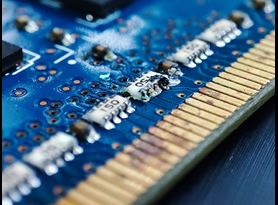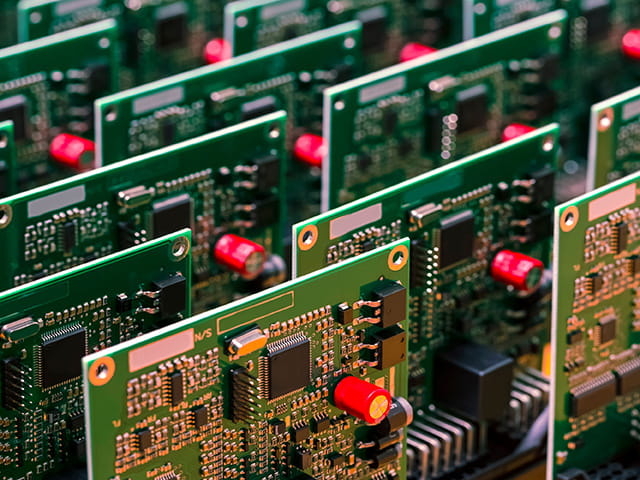Guard against contamination-driven component failure with Element’s detailed ion chromatography testing for PCBs and other electrical elements.
Ion chromatography or IC testing provides information about the cleanliness of a product, specifically individual ionic data values, for products such as printed circuit boards, printed circuit assemblies, and soldering fluxes.
The decreasing size of board and assembly circuitry has made product failures due to shorting more likely. Contaminated boards are more likely to suffer these kinds of failures, so manufacturers have become more attentive to how clean their components are and what ionic species the components might be contaminated with. Unlike more conventional cleanliness testing, which provides a single numerical value to rate cleanliness, ion chromatography provides individual data values for specific ionic species. Ion chromatography testing has been adapted for use not only with printed circuit boards and assemblies but also for soldering fluxes, unit housings, electrical components, surface mount adhesives, and related elements.
Why ion chromatography testing is important
Ion chromatography provides accurate qualitative and quantitative evaluations of specific anions and cations, which are often formed when electrons are transferred between metal and non-metal materials. The ability to separate and detect trace ionic species, weak organic acids, silicates, carbohydrates, amino acids and other substances makes IC effective in a wide variety of test programs.
IC testing is most effective when you need very detailed information about the cleanliness of your products, rather than a general measure of overall cleanliness. The end use of your product—consumer vs. military vs. aerospace vs. telecommunication vs. medical—may influence the level of precision you must use to evaluate cleanliness due to the level of reliability required.
IC test methods
When evaluating samples with Ion chromatography, the following established test methods are often used by the industry:
- IPC-TM-650, method 2.3.28 – Ionic Analysis of Circuit Boards, Ion chromatography Method
- IPC-TM-650, method 2.3.28.1 – Halide Content of Soldering Fluxes and Pastes
- IPC-TM-650, method 2.3.28.2 – Bare Printed Board Cleanliness by Ion chromatography
- MIL-STD-883, method 5011, section 3.5.4 – Evaluation and Acceptance Procedures for Polymeric Materials, Ionic Impurities
In addition to these established methods in which whole samples or materials are analyzed, ion chromatography testing is also commonly used to investigate local areas of interest on a specimen. When residue or foreign material is observed on a printed circuit board or assembly, localized extraction techniques can be used to obtain samples that can then be analyzed via IC.
Ion chromatography failure analysis
IC can be useful in failure analysis if the failure mode of a product is believed to be related to the undesired presence of ionic material. Ionic material can cause a high resistance short between areas that should be electrically isolated. On bare printed circuit boards, fully populated printed circuit assemblies or any similar electrical component, information obtained from IC testing can help isolate and identify the potential root cause of the product failure.
The Element advantage
Element is among the most innovative and reliable providers of ion chromatography testing and certification services for product developers, manufacturers and environmental agencies. Get in touch with us for more information on our ion chromatography testing programs and the many other testing and certification services we provide for PCBs and electronic components.
Ready to request a quote?
Our deliverable is certainty - high quality data, test reports and certificates that you can absolutely rely on when making decisions about your materials and compliance. Engage with an expert today.
Learn more

Printed Circuit Board Testing
Ensure your printed circuit boards and finished printed circuit assemblies are of the highest quality and compliant with relevant standards with comprehensive PCB testing from Element.

Electrochemical Migration (ECM) Testing
Protect your printed circuit boards against failure in the field with electrochemical migration (ECM) testing from the experts at Element.

Printed Circuit Board (PCB) Failure Analysis
Understand and rectify the root causes of PCB failure with industry-leading PCB failure analysis from the testing experts at Element.

PCB Cleanliness & Contamination Testing
Ensure your PCBs are free of contaminants that may cause corrosion, shorting, and product failure.

